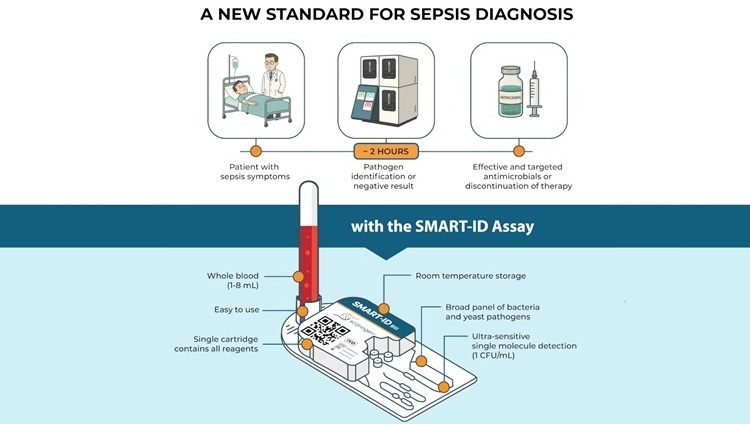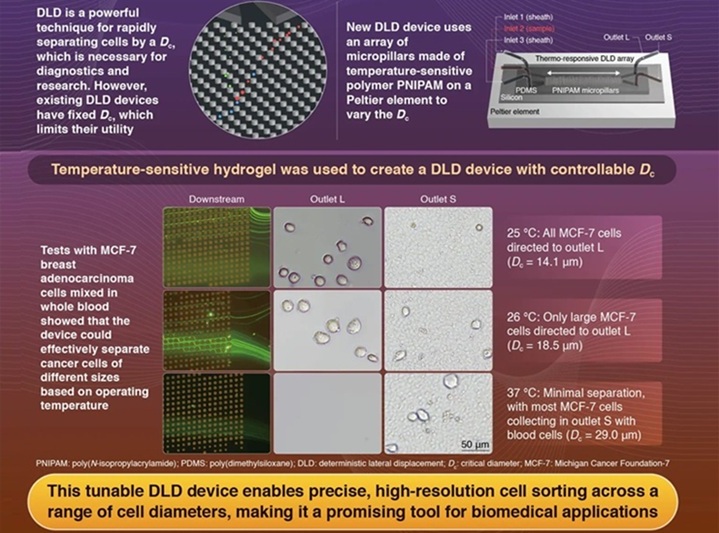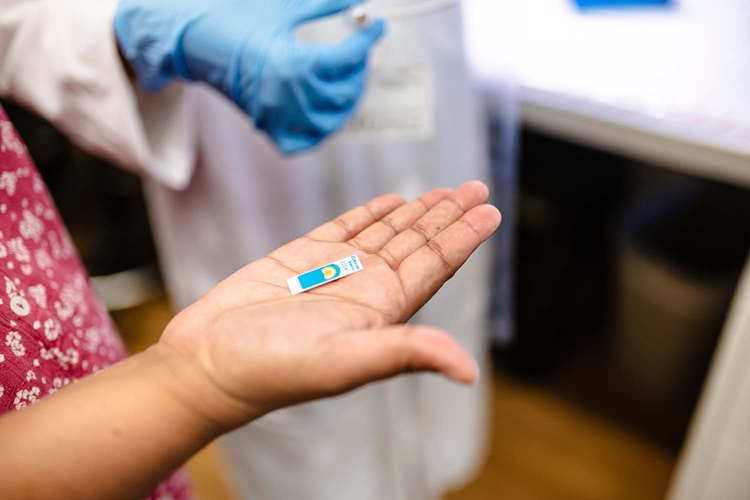Reasons for Rejecting Blood Samples Analyzed
|
By LabMedica International staff writers Posted on 24 Jan 2012 |
A determination has been made of what types of preanalytical errors that leads to rejection of blood samples in the clinical laboratory.
Errors in clinical laboratories have a great impact on safety and care of patients, and need to be carefully analyzed for improvements to be made in the preanalytical phase, which is responsible for about 70% of errors.
Laboratory scientists at the University Hospital (Porto Alegre, Brazil) carried out an analysis of rejected samples and consequent request for new daily collections of blood for conduction of tests in the following analytical departments: biochemical-immunoassay and hematology. The analysis was performed on data collected from June to August 2010.
The rejection criteria in clotted, hemolyzed, icteric and lipemic samples were visually applied by two technologists and the criterion for the clotted sample was only analyzed in samples collected in ethylenediamine tetra-acetic acid (EDTA) or sodium citrate tubes. The rejection criterion for icteric samples was applied in samples with seric bilirubin levels greater than 25 mg/L that could interfere with the measurement of some tests, such as those for albumin, cholesterol, and total protein. Lipemic samples, in turn, were rejected when serum triglycerides levels exceeded 400 mg/dL, as that may inhibit the tests for amylase, uric acid, urea, bilirubin and total protein.
Of the 77,051 blood samples that were collected during the three months period, 441 (0.57%) were rejected by some type of preanalytical error and therefore had to be recollected. A clot was found in 43.8% of disallowed samples and was found to be the major cause of rejection of samples, followed by 24% with insufficient sample volume. The third most frequent cause for rejecting samples were hemolyzed samples, which involved 17.9% of cases. Other reasons for rejection of samples were misidentification, inappropriate tube, lipemic samples, inadequate sample/additive ratio, and insignificant icteric samples.
The authors concluded that in their laboratory, despite the percentage of preanalytical errors being small, the appearance of laboratory errors could be provoke an adverse impact on patient care. For example, when blood constituents such as potassium, magnesium, iron, lactate dehydrogenase, phosphorus, ammonium, and total protein are falsely increased during hemolysis. In this context, the poor quality specimens could influence laboratory results, which would be clinically incorrect and therefore mislead the physician whose intervention might be unsuccessful. The study was published in January 2012 in the journal Clinical Biochemistry.
Related Links:
University Hospital Porto Alegre
Errors in clinical laboratories have a great impact on safety and care of patients, and need to be carefully analyzed for improvements to be made in the preanalytical phase, which is responsible for about 70% of errors.
Laboratory scientists at the University Hospital (Porto Alegre, Brazil) carried out an analysis of rejected samples and consequent request for new daily collections of blood for conduction of tests in the following analytical departments: biochemical-immunoassay and hematology. The analysis was performed on data collected from June to August 2010.
The rejection criteria in clotted, hemolyzed, icteric and lipemic samples were visually applied by two technologists and the criterion for the clotted sample was only analyzed in samples collected in ethylenediamine tetra-acetic acid (EDTA) or sodium citrate tubes. The rejection criterion for icteric samples was applied in samples with seric bilirubin levels greater than 25 mg/L that could interfere with the measurement of some tests, such as those for albumin, cholesterol, and total protein. Lipemic samples, in turn, were rejected when serum triglycerides levels exceeded 400 mg/dL, as that may inhibit the tests for amylase, uric acid, urea, bilirubin and total protein.
Of the 77,051 blood samples that were collected during the three months period, 441 (0.57%) were rejected by some type of preanalytical error and therefore had to be recollected. A clot was found in 43.8% of disallowed samples and was found to be the major cause of rejection of samples, followed by 24% with insufficient sample volume. The third most frequent cause for rejecting samples were hemolyzed samples, which involved 17.9% of cases. Other reasons for rejection of samples were misidentification, inappropriate tube, lipemic samples, inadequate sample/additive ratio, and insignificant icteric samples.
The authors concluded that in their laboratory, despite the percentage of preanalytical errors being small, the appearance of laboratory errors could be provoke an adverse impact on patient care. For example, when blood constituents such as potassium, magnesium, iron, lactate dehydrogenase, phosphorus, ammonium, and total protein are falsely increased during hemolysis. In this context, the poor quality specimens could influence laboratory results, which would be clinically incorrect and therefore mislead the physician whose intervention might be unsuccessful. The study was published in January 2012 in the journal Clinical Biochemistry.
Related Links:
University Hospital Porto Alegre
Latest Clinical Chem. News
- Chemical Imaging Probe Could Track and Treat Prostate Cancer
- Mismatch Between Two Common Kidney Function Tests Indicates Serious Health Problems
- VOCs Show Promise for Early Multi-Cancer Detection
- Portable Raman Spectroscopy Offers Cost-Effective Kidney Disease Diagnosis at POC
- Gold Nanoparticles to Improve Accuracy of Ovarian Cancer Diagnosis
- Simultaneous Cell Isolation Technology Improves Cancer Diagnostic Accuracy
- Simple Non-Invasive Hair-Based Test Could Speed ALS Diagnosis
- Paper Strip Saliva Test Detects Elevated Uric Acid Levels Without Blood Draws
- Prostate Cancer Markers Based on Chemical Make-Up of Calcifications to Speed Up Detection
- Breath Test Could Help Detect Blood Cancers
- ML-Powered Gas Sensors to Detect Pathogens and AMR at POC
- Saliva-Based Cancer Detection Technology Eliminates Need for Complex Sample Preparation
- Skin Swabs Could Detect Parkinson’s Years Before Symptoms Appear
- New Clinical Chemistry Analyzer Designed to Meet Growing Demands of Modern Labs

- New Reference Measurement Procedure Standardizes Nucleic Acid Amplification Test Results
- Pen-Like Tool Quickly and Non-Invasively Detects Opioids from Skin
Channels
Molecular Diagnostics
view channel
Simple Urine Test to Revolutionize Bladder Cancer Diagnosis and Treatment
Bladder cancer is one of the most common and deadly urological cancers and is marked by a high rate of recurrence. Diagnosis and follow-up still rely heavily on invasive cystoscopy or urine cytology, which... Read more
Blood Test to Enable Earlier and Simpler Detection of Liver Fibrosis
Persistent liver damage caused by alcohol misuse or viral infections can trigger liver fibrosis, a condition in which healthy tissue is gradually replaced by collagen fibers. Even after successful treatment... Read moreHematology
view channel
Platelet Activity Blood Test in Middle Age Could Identify Early Alzheimer’s Risk
Early detection of Alzheimer’s disease remains one of the biggest unmet needs in neurology, particularly because the biological changes underlying the disorder begin decades before memory symptoms appear.... Read more
Microvesicles Measurement Could Detect Vascular Injury in Sickle Cell Disease Patients
Assessing disease severity in sickle cell disease (SCD) remains challenging, especially when trying to predict hemolysis, vascular injury, and risk of complications such as vaso-occlusive crises.... Read more
ADLM’s New Coagulation Testing Guidance to Improve Care for Patients on Blood Thinners
Direct oral anticoagulants (DOACs) are one of the most common types of blood thinners. Patients take them to prevent a host of complications that could arise from blood clotting, including stroke, deep... Read moreImmunology
view channel
New Test Distinguishes Vaccine-Induced False Positives from Active HIV Infection
Since HIV was identified in 1983, more than 91 million people have contracted the virus, and over 44 million have died from related causes. Today, nearly 40 million individuals worldwide live with HIV-1,... Read more
Gene Signature Test Predicts Response to Key Breast Cancer Treatment
DK4/6 inhibitors paired with hormone therapy have become a cornerstone treatment for advanced HR+/HER2– breast cancer, slowing tumor growth by blocking key proteins that drive cell division.... Read more
Chip Captures Cancer Cells from Blood to Help Select Right Breast Cancer Treatment
Ductal carcinoma in situ (DCIS) accounts for about a quarter of all breast cancer cases and generally carries a good prognosis. This non-invasive form of the disease may or may not become life-threatening.... Read moreMicrobiology
view channel
Rapid Diagnostic Test Matches Gold Standard for Sepsis Detection
Sepsis kills 11 million people worldwide every year and generates massive healthcare costs. In the USA and Europe alone, sepsis accounts for USD 100 billion in annual hospitalization expenses.... Read moreRapid POC Tuberculosis Test Provides Results Within 15 Minutes
Tuberculosis remains one of the world’s deadliest infectious diseases, and reducing new cases depends on identifying individuals with latent infection before it progresses. Current diagnostic tools often... Read more
Rapid Assay Identifies Bloodstream Infection Pathogens Directly from Patient Samples
Bloodstream infections in sepsis progress quickly and demand rapid, precise diagnosis. Current blood-culture methods often take one to five days to identify the pathogen, leaving clinicians to treat blindly... Read morePathology
view channel
Tunable Cell-Sorting Device Holds Potential for Multiple Biomedical Applications
Isolating rare cancer cells from blood is essential for diagnosing metastasis and guiding treatment decisions, but remains technically challenging. Many existing techniques struggle to balance accuracy,... Read moreAI Tool Outperforms Doctors in Spotting Blood Cell Abnormalities
Diagnosing blood disorders depends on recognizing subtle abnormalities in cell size, shape, and structure, yet this process is slow, subjective, and requires years of expert training. Even specialists... Read moreTechnology
view channel
Artificial Intelligence Model Could Accelerate Rare Disease Diagnosis
Identifying which genetic variants actually cause disease remains one of the biggest challenges in genomic medicine. Each person carries tens of thousands of DNA changes, yet only a few meaningfully alter... Read more
AI Saliva Sensor Enables Early Detection of Head and Neck Cancer
Early detection of head and neck cancer remains difficult because the disease produces few or no symptoms in its earliest stages, and lesions often lie deep within the head or neck, where biopsy or endoscopy... Read moreIndustry
view channel
Abbott Acquires Cancer-Screening Company Exact Sciences
Abbott (Abbott Park, IL, USA) has entered into a definitive agreement to acquire Exact Sciences (Madison, WI, USA), enabling it to enter and lead in fast-growing cancer diagnostics segments.... Read more







 Analyzer.jpg)














